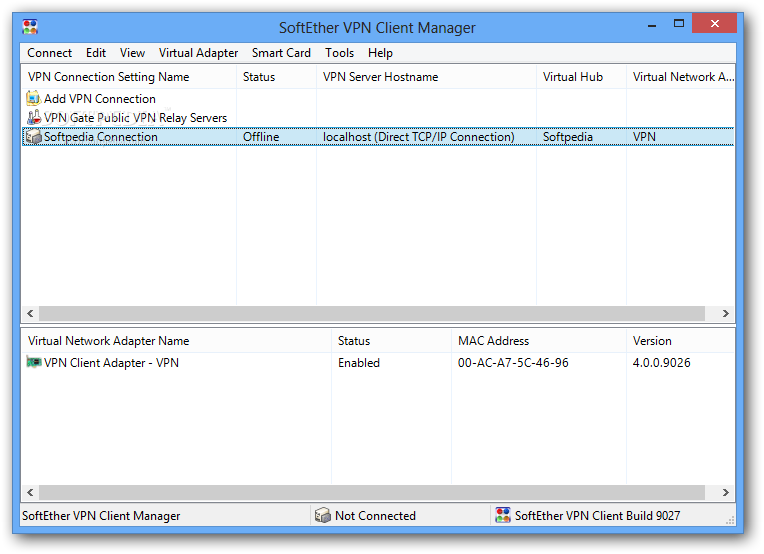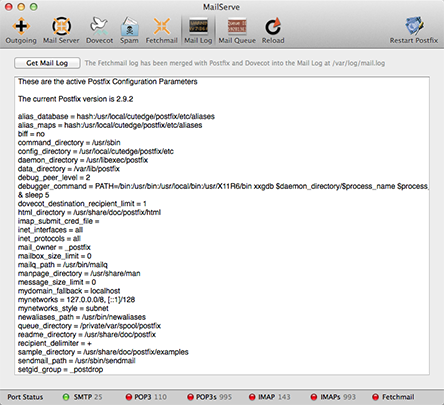Check compatibility
You can upgrade to OS X El Capitan from OS X Snow Leopard or later on any of the following Mac models. Your Mac also needs at least 2GB of memory and 8.8GB of available storage space.
Jul 20, 2016 How to access your local OSX mail spool via IMAP using Postfix and Dovecot for local development. This setup has been tested on El Capitan. Configure Postfix. The first step will be to have Postfix redirect all mail to one address that you can control. Add the following line to /etc/postfix/main.cf. With my recent update from El Capitan to Catalina, a utility I've depended on for nearly the entire time OS X has existed, stopped working, and I'm looking for a replacement. I see a number of 'clipboard managers' out there, but most of them are focused on saving a history of many past copies so you can paste old ones, which is not what I want.
MacBook introduced in 2009 or later, plus MacBook (13-inch, Aluminum, Late 2008)
MacBook Air introduced in late 2008 or later
MacBook Pro introduced in mid 2007 or later
Mac mini introduced in early 2009 or later
iMac introduced in mid 2007 or later
Mac Pro introduced in early 2008 or later
Xserve models introduced in early 2009

To find your Mac model, memory, storage space, and macOS version, choose About This Mac from the Apple menu . If your Mac isn't compatible with OS X El Capitan, the installer will let you know.
Make a backup
Before installing any upgrade, it’s a good idea to back up your Mac. Time Machine makes it simple, and other backup methods are also available. Learn how to back up your Mac.
Get connected
It takes time to download and install OS X, so make sure that you have a reliable Internet connection. If you're using a Mac notebook computer, plug it into AC power.
Download OS X El Capitan
For the strongest security and latest features, find out whether you can upgrade to macOS Catalina, the latest version of macOS.
If you still need OS X El Capitan, use this link: Download OS X El Capitan. A file named InstallMacOSX.dmg will download to your Mac.
Install the macOS installer
Double-click the downloaded file to open a window showing its contents. Then double-click the file within, named InstallMacOSX.pkg.
Follow the onscreen instructions, which will guide you through the steps necessary to install.
Begin installation
After installation of the installer is complete, open the Applications folder on your Mac, then double-click the file named Install OS X El Capitan.
Click Continue and follow the onscreen instructions. You might find it easiest to begin installation in the evening so that it can complete overnight, if needed.
Allow installation to complete
Please allow installation to complete without putting your Mac to sleep or closing its lid. Your Mac might restart, show a progress bar, or show a blank screen several times as it installs both OS X and related updates to your Mac firmware.

Learn more
- OS X El Capitan won't install on top of a later version of macOS, but you can erase your disk first or install on another disk.
- You can use macOS Recovery to reinstall macOS.
The Server app provides for mail relaying with client authentication, but it doesn't provide for authenticated relaying over an SSL/TLS connection.
Please take the following steps to configure Postfix to relay mail to a remote SMTP server with password authentication over SSL. Substitute as required for strings in italics below. Address is the fully-qualified domain name of the relay host. The value of port is usually either 25, 465, or 587. Username and password refer to your credentials on the relay host.
In the current version of OS X Server (but maybe not in older versions), Steps 1 and 3 should be done for you when you enable relaying and relay authentication in the Server application.
1. If necessary, create or update the relayhost directive in
/Library/Server/Mail/Config/postfix/main.cf
It should look like this:
relayhost = [address]:port
2. Add these lines, above the section at the end that begins with the comment '# Mac OS X Server':
smtp_sasl_security_options =
Configure Postfix For El Capitan 10
smtp_tls_CAfile = /etc/certificates/relayhost.pem
smtp_tls_session_cache_database = btree:$data_directory/smtp_tls_session_cache
smtp_use_tls = yes
Configure Postfix For El Capitan Update
3. If it doesn't already exist, create the password file
Configure Postfix For El Capitan Mac
/Library/Server/Mail/Config/postfix/sasl/passwd
with this content:
[address]:port
username:password
Here address must match $relayhost.
Then create the password database:
Configure Postfix For El Capitan 2
sudo postmap /Library/Server/Mail/Config/postfix/sasl/passwd
This action creates the file
/Library/Server/Mail/Config/postfix/sasl/passwd.db
The two password files should be readable by root only.
4. Create the file
/etc/certificates/relayhost.pem
with the CA certificate(s) to be trusted for authentication of the remote host. You get those certificates from the service provider. If you can't find a link to download them, try this:
openssl s_client -connect address:port -showcerts < /dev/null | sed -n '/-BEGIN /,/-END /p' | sudo sh -c 'cat > /etc/certificates/relayhost.pem'
Configure Postfix For El Capitan Drive
The command may produce an error message that isn't necessarily significant. For servers that use the older STARTTLS protocol, rather than straight TLS or SSL, this command may need to be modified.
Configure Postfix For El Capitan 7

5. Restart the Mail service.
Apr 7, 2016 2:21 PM



